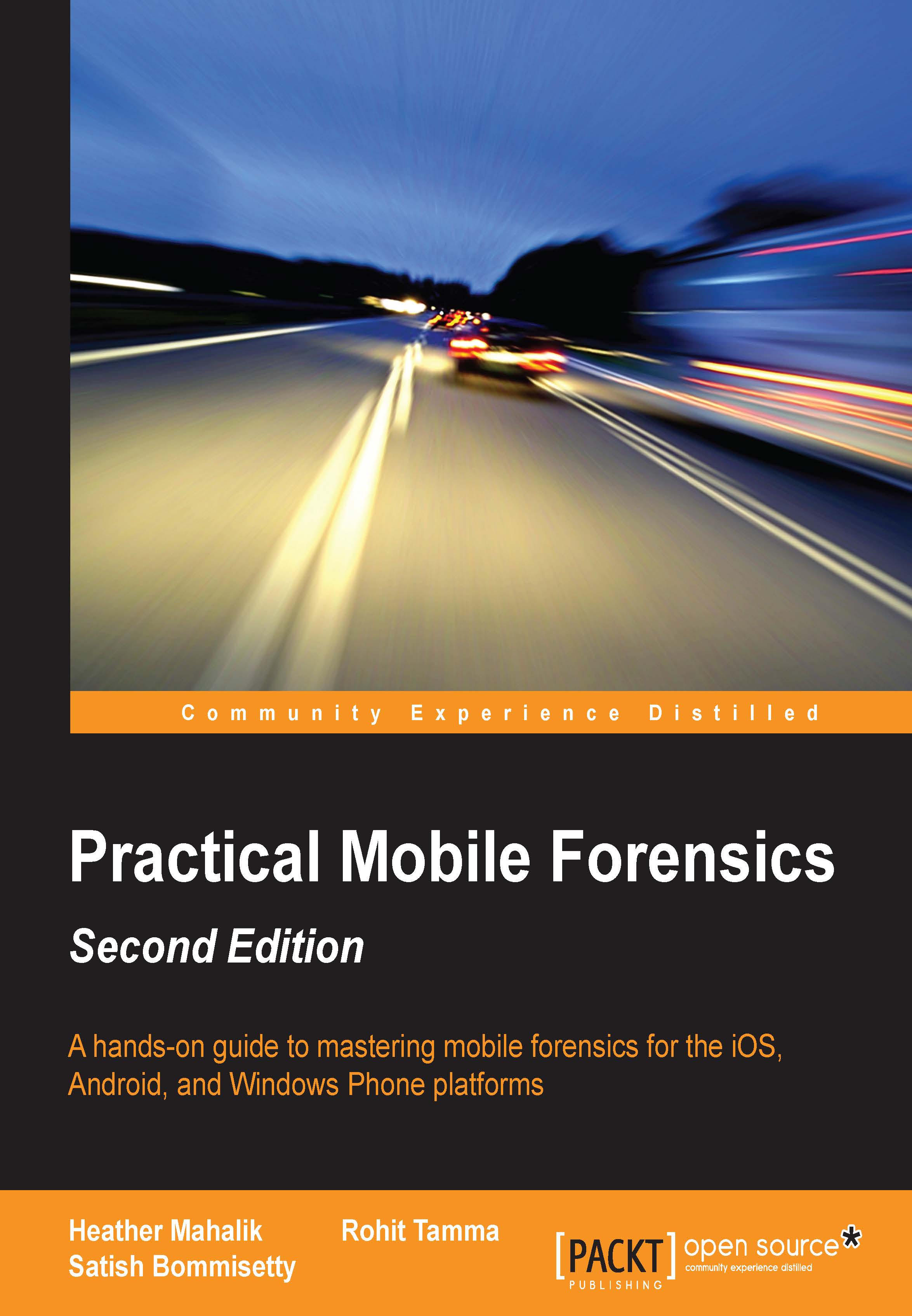-
Book Overview & Buying

-
Table Of Contents

Practical Mobile Forensics - Second Edition
By :

Practical Mobile Forensics
By:
Overview of this book
Mobile phone forensics is the science of retrieving data from a mobile phone under forensically sound conditions. This book is an update to Practical Mobile Forensics and it delves into the concepts of mobile forensics and its importance in today's world.
We will deep dive into mobile forensics techniques in iOS 8 - 9.2, Android 4.4 - 6, and Windows Phone devices. We will demonstrate the latest open source and commercial mobile forensics tools, enabling you to analyze and retrieve data effectively. You will learn how to introspect and retrieve data from cloud, and document and prepare reports for your investigations.
By the end of this book, you will have mastered the current operating systems and techniques so you can recover data from mobile devices by leveraging open source solutions.
Table of Contents (14 chapters)
Preface
 Free Chapter
Free Chapter
1. Introduction to Mobile Forensics
2. Understanding the Internals of iOS Devices
3. iOS Forensic Tools
4. Data Acquisition from iOS Devices
5. Data Acquisition from iOS Backups
6. iOS Data Analysis and Recovery
7. Understanding Android
8. Android Forensic Setup and Pre Data Extraction Techniques
9. Android Data Extraction Techniques
10. Android Data Analysis and Recovery
11. Android App Analysis, Malware, and Reverse Engineering
12. Windows Phone Forensics
